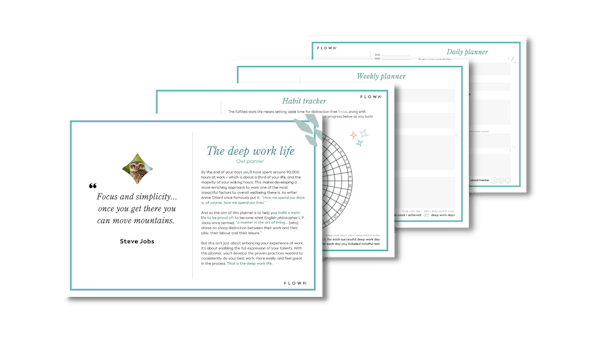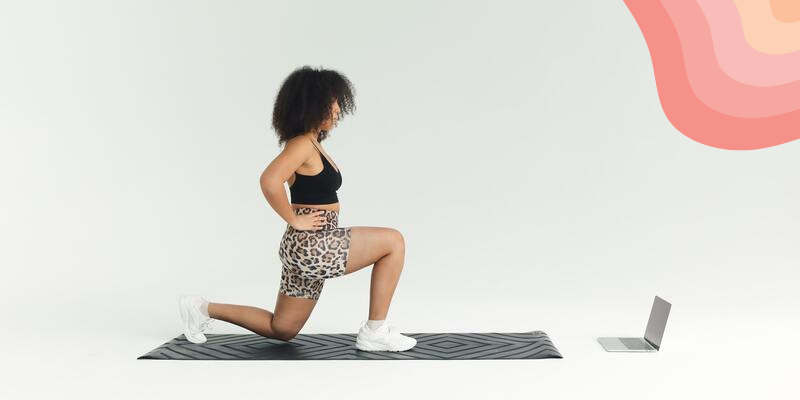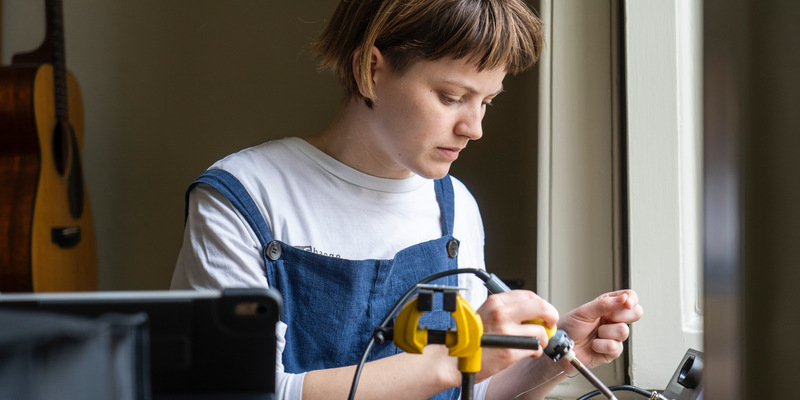3 unexpected ways to find calm and focus with mindful breathing and music


By Talia Girton
•
Jun 29, 2023
We’ve all received (sometimes unsolicited) advice to “take a deep breath” in order to find an inner sense of calm and focus. It’s got the right idea, and it’s said with the best of intentions, but this guidance couldn’t be less specific if it tried.
Does just one deep breath cut it? If not, how many should you take? And how deep should those breaths be? How do you even measure breath depth?? Fear not, seeker of clarity, music’s got you covered.
This article will hone in on three specific ways to connect with your breath using music to help with timing, pacing and focus. You’ll learn how to choose specific songs that, when combined with deep breathing, induce relaxation, reduce stress, and calm the nervous system.
“Music to me is like breathing. I don't get tired of breathing, I don't get tired of music.”
How states of focus and calm lead to greater wellbeing and productivity
The relationship between focus and calm is a reciprocal one. Focus enables you to achieve a state of calm by directing your attention away from distractions and towards the task at hand. When you are focused, you enter a flow state where time seems to pass effortlessly and productivity soars.
Conversely, cultivating a sense of calm enhances your ability to stay focused. When you are calm, you are less prone to becoming overwhelmed by stress or external stimuli. You are better equipped to maintain a clear and composed mindset, which supports sustained attention and concentration. Calmness allows you to approach tasks with a sense of groundedness and stability, fostering a deeper level of focus.
The ability to focus enhances your capacity for calmness, while cultivating a state of calm supports your ability to maintain focus.
Discover your deep work personality with this practical guide
Uncover the secrets of deep work and learn to focus with ease to power through your tasks with this handy guide.

Music, breath and the nervous system
So, how do you conjure a sense of calm out of the ether? By focusing on the breath to activate your parasympathetic nervous system. As you engage in deep breathing, the vagus nerve, a key component of the parasympathetic system (PNS), is stimulated. This activation leads to a cascade of physiological changes, including a decrease in heart rate and blood pressure.
By triggering this relaxation response, deep breathing helps to counteract the effects of the sympathetic nervous system, which is responsible for the body's "fight or flight" response.
As touched upon in a previous post, music has an impact on a number of neurotransmitters in the brain including dopamine, our “feel good” hormone, serotonin, our mood regulator, and cortisol, our stress hormone.
Specifically, music increases dopamine and serotonin, making us feel better, and decreases cortisol, making us feel less stressed. When combined with deep breathing, music also acts as an assistive device to keep time boundaries, focus the mind, mask distractions and provide a structure for pacing.
How music aids breathwork
Music provides a time structure
Do you only have a five minute break before it’s time to dive into (yet another) meeting? Rather than setting an obtrusive alarm for your break, choose a familiar song that lasts for the amount of time you have to spare. You’ll be gently eased into and out of your breathwork exercise because you intrinsically know the structure of the song you’ve chosen.
Music gives the mind a stimulus to focus on
If you’re like me, sitting down to meditate or breathe in silence activates your monkey mind. Did I prep enough for that presentation this afternoon? Is it time to bring my dog to the vet for a check up? When did I last check the tire pressure on my bicycle? Music gives the mind a focal point, a here-and-now stimulus to follow as you engage with your breath. It can also serve as a masking agent, drowning out distracting sounds in your vicinity.
Music helps guide the pace of your breath
It probably won’t surprise you to learn that listening to relaxing music has been shown to lower your heart rate, blood pressure and respiration rate. While many people find music with a slow tempo to be relaxing, it’s more important to tune in to your personal perception of what constitutes “calm” music than to just pop on the “Calming Classical” playlist on Spotify (though that playlist might be right up your alley!).
Entraining (synchronising) your breathing to the tempo of a slow song brings your parasympathetic nervous system online. By matching the rate of your breath to a song that’s 50-65 beats per minute (BMP), you slow it down to about 4-7 cycles per minute, which in turn activates the body’s “rest and digest” response. More on this below.
How to use music and breathwork to find focus and calm
Entrainment of Breath and Beat
Resonance Frequency Breathing
Several studies have demonstrated how slowing the breath down to 4 to 7 breaths per minute brings about a state of calm alertness and mental clarity. Could you stare at a stopwatch, count your breaths and cross your fingers that you don’t complete more than 7 in 60 seconds? Sure, but an even better option would be to choose a song with a slow pulse and match your breath to the beat.
For example, breathing in for a bar and out for a bar to Seal’s Kiss From a Rose slows your breath to about 5.5 cycles per minute. All you have to do is inhale for a count of four and exhale for a count of 4, following the pulse of the song. **The trick is to choose songs that are about 50-65 BMP. I made this playlist for you so you don’t have to go searching for the perfect mix. If the pace feels fast, go twice as slow.
Box Breath to Music
Like resonance frequency breathing, box breathing to music works with entrainment: matching breath to beat. It’s especially helpful in recentring yourself after a particularly stressful or anxiety-inducing interaction; it can counteract a nervous system fight or flight response and lead to improved concentration. Here’s how to do it:
Find a comfy position where you feel supported, ideally with your feet on the floor
Breathe in through the nose for a count of 4
Hold the breath for a count of 4
Exhale for a count of 4
Hold for a count of 4
Repeat steps 2-5 for the entirety of your chosen song
Box breathing is most effective when done for 4-5 minutes; Healing Drums is a great track for this exercise. Pace your breath so that the inhales and exhales last for the entirety of each count of 4. If you find that counts of 4 feel too long, try counts of 2, or pick a song with a slightly faster tempo.
Breathe to the Beat of Your Heart
If you find it difficult to follow the beat of a song, follow your heart instead. Put on a free flowing, ambient, arhythmic song such as Apparent Lushness or Portugal (A Lift) to serve as an auditory stimulus and masking agent, and breathe in and out to the beat of your heart.
You can choose to inhale and exhale for 3 to 8 counts, depending on what feels good to you. Try starting with a lower count (say in for a count of 3, out for a count of 3) and then increase as you go along. You might also choose to extend the exhale breath for longer than your inhale breath (in for 4, out for 6).
Sing it Out
Some of you are cringing and some are saying “yes, let’s do it!” The fact of the matter is that the easiest way to activate your PNS is to elongate your exhales, and the easiest way to elongate your exhales is to sing. It doesn’t matter what you sound like; the fact that you are singing requires you to lengthen and slow down the breath, and that is what we are tapping into. So if you work from home, or know of a soundproof room at the office, put on your favourite tune and hum along or belt it out!
The power of music and breath
While I’ve given you some powerful exercises to try, the most important thing to remember is that deep breathing and relaxing music on their own work absolute magic on our nervous systems. Finding a moment to pause and take some full belly breaths will ground you and create a sense of calm that facilitates a focused state of mind. Listening to music you find relaxing will have a similar effect. Put the two together and you may as well be on your way to Hogwarts.
Referenced Tracks/Playlists
Kiss from a Rose by Seal
Healing Drums by African Music Drums Collection
Apparent Lushness by Earthen Sea
Portugal (A Lift) by Sea Oleena
Referenced Playlists
Calming Classical by Spotify
Resonance Frequency Breathing Songs by Talia Girton
Further Reading
Book: Music, the breath and health: Advances in integrative music therapy by Ronit Azoulay and Joanne V. Loewy

















